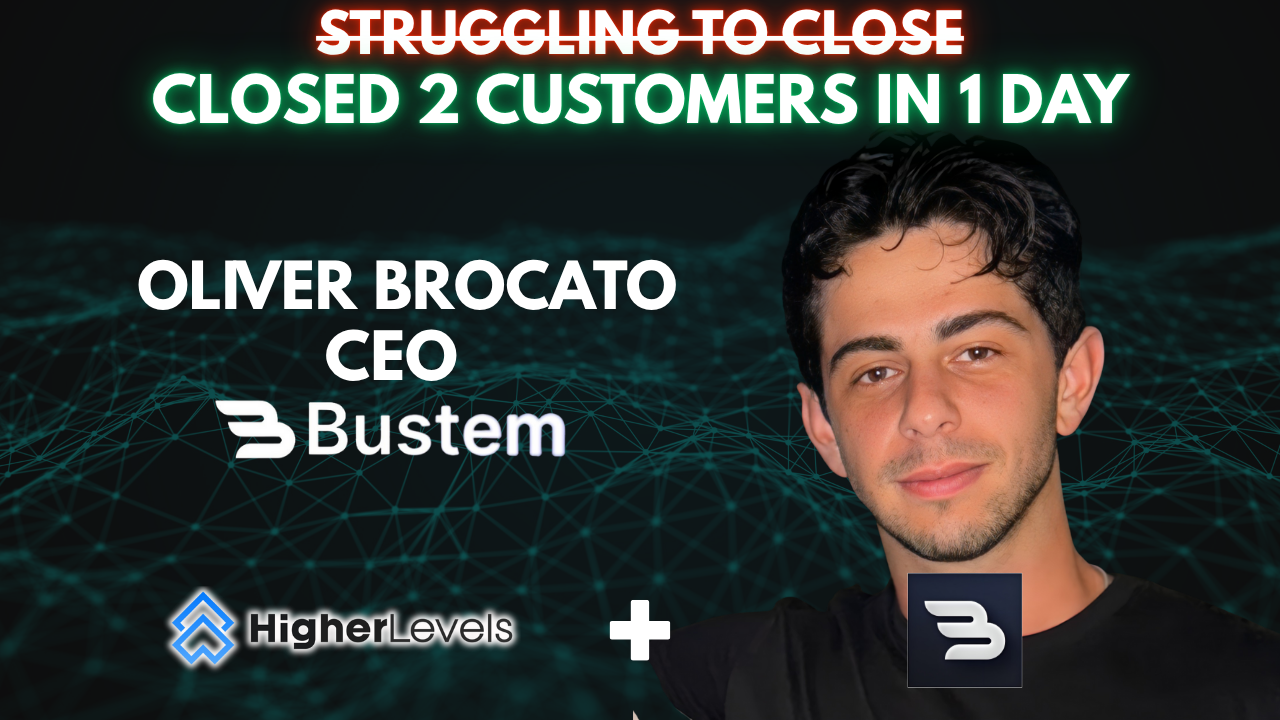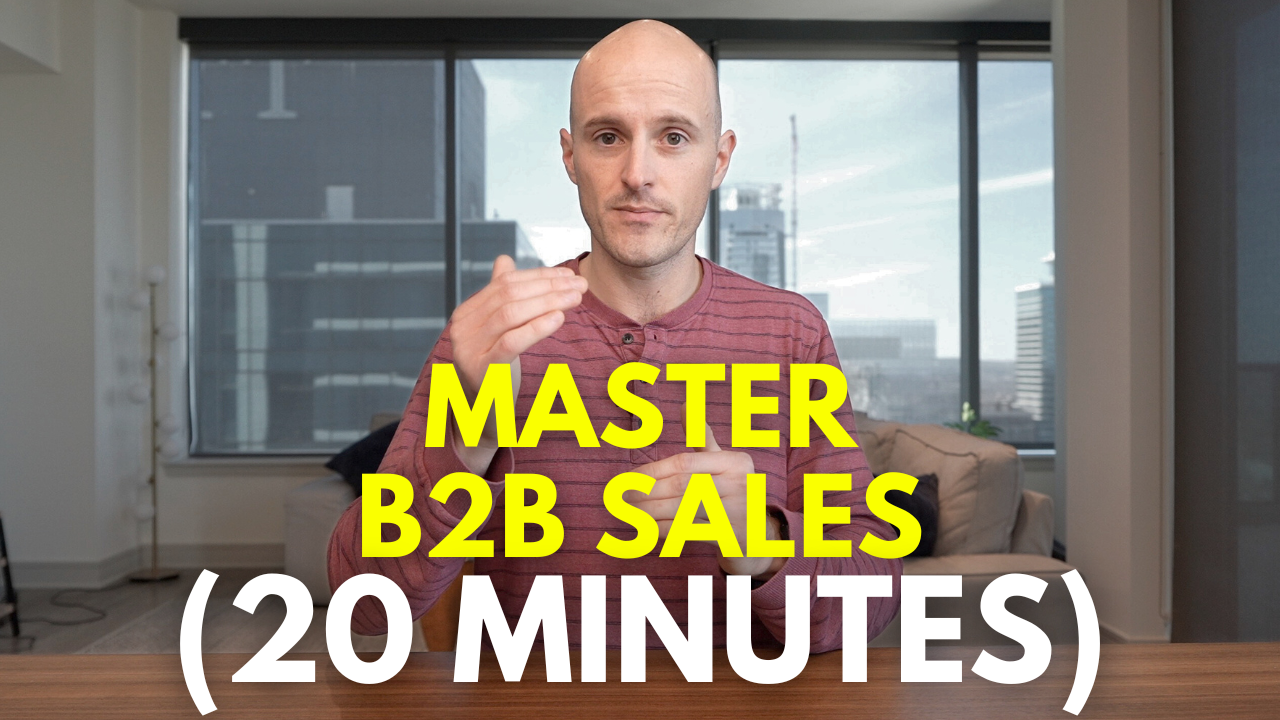6 SDR Mistakes That Cost Companies Millions From Oracle’s Top SDR Manager
If you are a tech executive or founder frustrated with inconsistent outbound results, this guide breaks down exactly why your SDR team keeps missing and what you need to put in place so your whole organization can finally run a predictable sales motion.
.png)

INTRO
Most tech companies do not fail because their product is weak. They fail because their SDR function never ramps. After working with thousands of reps and supporting founders across AI, SaaS, and deep tech, we consistently see the same patterns destroy pipeline before a single deal even begins.
If you are a founder or tech executive who has hired and fired multiple SDRs with nothing to show for it, this guide will show you the exact reasons your team is not producing and what to fix first.
WHAT YOU WILL LEARN
- The six avoidable mistakes that cripple most SDR organizations
- How to onboard reps so they ramp in 4 to 6 weeks
- How to simplify messaging, targeting, and territory structure
- What to track, what to ignore, and how to diagnose performance
- How to align SDR and AE expectations to stop wasted meetings
- How to think about SDR compensation so you attract real talent
CONTEXT: WHY THIS MATTERS
Founders try to solve pipeline problems by hiring more reps. That is almost never the root issue. The real breakdown happens long before outreach begins. Reps are overloaded, untrained, territories are undefined, messaging is incoherent, and compensation creates the wrong behavior.
Connor Murray, former number one SDR Manager at Oracle, learned this the hard way as a rep who was dead last in his class after six weeks. He later rebuilt entire SDR teams by fixing the fundamentals outlined below.
MISTAKE 1: Overloading SDRs With Too Much Information
The fastest way to impair a new SDR is to drown them in battle cards, persona essays, competitor matrices, thirty page ICP documents, and multiple cold call scripts. Reps show up wanting to win. What they get instead is information they cannot act on.
New SDRs need a launchpad, not an encyclopedia. In the first four to six weeks, the only priority is helping them get one or two quick wins. That requires:
- One email template that already works
- One call script they can memorize
- One simple cadence
- One clear territory or list
If they get early yeses, they build confidence. If they do not, they question everything and churn in silence.
MISTAKE 2: No Defined ICP or Targeting Strategy
Most founders hire their first SDR without defining who they actually sell to. Reps hear “go outbound” and chase random accounts, random industries, and random titles. At scale, this becomes even worse when reorgs reset territories and the entire SDR function starts improvising.
High performing SDR teams always start with segmentation. Connor’s team at Oracle organized everything by:
- Persona
- Industry
- Trigger event
- Product relevance
Reps are not strategists. They should not have to invent ICP from scratch. When you give them structure, they immediately become more targeted, more confident, and more consistent. If you have not figured that out yet yourself, do NOT expect that you're going to find someone, let alone an entry level SDR (with or without experience) that is going to be able to figure this out for your company.
MISTAKE 3: No Tracking of SDR Inputs or Production
When reps fail, leaders often have no idea why. Was it messaging? Volume? Bad list construction? Weak calling ability? Poor timing? Low reply rates? Wrong personas? Without tracking, you are guessing.
At minimum, every founder should track:
- Dials per day
- Answer rate
- Set rate
- Email open rate
- Email reply rate
- Reply to meeting conversion
This data reveals coaching opportunities instantly. Without it, you cannot identify what is actually holding the rep back, and they cannot identify a path to improving.
MISTAKE 4: Treating All Leads the Same
Most companies lump all inbound leads into one bucket. To an SDR, a pricing request looks the same as a webinar attendee. Both get the same follow up, the same timing, and the same quality of attention.
This destroys conversion. Pricing requests should be treated like gold. White paper downloads need a different angle. Old recycled leads need a different path entirely.
If you want reps to win, teach them to differentiate. Give them workflows for each type of inbound request. Help them recognize what deserves urgent follow up and what requires nurturing.
MISTAKE 5: Misaligned Qualification Standards Between SDRs and AEs
Some founders push reps to set any meeting they can. Others demand fully qualified discovery level calls before a meeting is acceptable. Both extremes ruin morale and destroy trust between SDRs and AEs.
The right approach sits in the middle. Reps should qualify for persona fit and clear need. AEs should qualify deeper. If you expect reps to run full discovery on cold calls and still hit a high meeting quota, you are guaranteeing burnout.
Clear criteria plus aligned KPIs prevents internal conflict and keeps both sides focused on pipeline quality, not blame.
MISTAKE 6: Underpaying SDRs and Expecting Elite Performance
If you want elite SDR results, you cannot offer compensation that only attracts people who are using your company as a resume booster. Many AI startups in San Francisco and New York attempt to hire SDRs at 55 to 65k base salaries while demanding five days a week in office.
Those reps will not ramp. They will not stay. And they will not produce pipeline.
Founders should think of SDR compensation as a revenue decision. A rep who produces three to five qualified opportunities each month will return far more than the additional one or two thousand dollars per month needed to attract stronger talent.
The real cost is not payroll. It is missed pipeline, missed deals, and months wasted on hiring cycles that never produce a fully ramped rep.
FAQ
Q: Why do most SDRs fail?
A: Because the company gives them too much information, no clear territory, and no simple launchpad for wins in the first month.
Q: How long should it take a new SDR to ramp?
A: Four to six weeks to book their first meetings and build confidence, assuming the right templates and structure are in place.
Q: How should founders think about SDR compensation?
A: Do the math. A slightly higher base almost always produces far more pipeline and lowers turnover. An extra $1k-$2k/month is the difference between arep who churns in 4 months and a rep who generates $1M+ in pipeline their first year (See video for full breakdown).
CTA
If you are a founder or tech executive who is tired of wasting time, money, and headcount on an SDR function that never ramps, our team can fix it.
Higher Levels builds SDR playbooks, compensation structures, onboarding systems, call frameworks, and ongoing coaching programs for early stage to F500 Companies. We have coached reps at every major tech company in the world.
You can reach our consulting team directly through the contact form at higherlevels.com. Share what you are trying to build and we will walk you through what it would take to make your SDR team productive fast and/or build one from the ground up.
TLDR
- Most SDR teams fail due to overload, not lack of effort
- Reps need simplicity, segmentation, and structure
- Tracking inputs reveals exactly where the breakdown is
- Lead types require different follow up motions
- Qualification must align with realistic SDR capacity
- Compensation is a revenue lever, not a cost center
DATE LAST UPDATED
November 2025
.svg)
.svg)
.svg)
.svg)
.svg)
.svg)


.png)


.svg)








